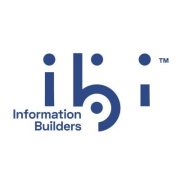Enterprise Service Bus (ESB) is an architectural style that supports the integration and communication of diverse applications in real-time within an enterprise. It acts as a central hub for data information flow, enhancing flexibility and efficiency.
Designed to simplify complex application discussions, ESBs enable seamless communication by decoupling systems and reusing existing services. They offer a structured approach to integrate disparate systems, handling protocols, and conversions required for data integration across multiple platforms.
What are key features of an ESB solution?Industries like finance and healthcare often implement ESB solutions to unify application landscapes, addressing complex data management needs. By integrating legacy systems with new applications, ESBs help ensure seamless data flow, which is critical for transactional processes and regulatory compliance.
Enabling quicker reaction to market needs and improving system performances, ESB technology plays a crucial role in the digital transformation journey of organizations. It facilitates efficient integration strategies, allowing IT teams to focus on innovation and growth initiatives.






























The purpose of an ESB (Enterprise Service Bus) is to act as a middleware tool that provides complex software applications with the ability to exchange interaction and messaging services. An ESB can also handle web services such as SOAP and REST, transform data formats (XML, JSON, XSLT, etc.) to suit your company’s needs, and can ensure access control to transmit data to its intended path via intelligent routing.
The ESB (Enterprise Service Bus) architecture makes application integration possible by putting a so-called “bus” between two applications, enabling each one to communicate with the bus. By decoupling systems from one another, it allows them to communicate without needing knowledge of other systems on the bus and without dependency. ESBs can manage different formats - from applications to services and mainframes. An ESB transmits a direct message on a specific route between either the application or other components. The path by which the ESB sends the messages is determined by an enterprise's specific business policy. ESBs also function as an application gateway and work as a service proxy. Using an ESB helps companies implement a service proxy that exposes a web service interface.
While an ESB (Enterprise Service Bus) is recognized as a software architecture that can integrate multiple applications into a single infrastructure, SOA is a service-oriented architecture that is used to create business applications that focus primarily on service-based development. Although they are both software architectures, ESB acts as the backbone of an SOA architecture; SOA makes it possible for decoupled services to interact with each other. The only way this exchange of data is possible, though, is via an ESB. In other words, an ESB is the tool that is used for application integration and is used to attain the ideas and principles that actually compose SOA.
Enterprise Service Bus helps streamline the integration of legacy systems by providing a centralized platform to connect disparate applications. It leverages standard protocols and messaging systems to ensure different systems can communicate seamlessly. This results in reduced complexity and operational costs. You can modernize your legacy systems without needing a complete overhaul, thus preserving your original investments while gaining scalability and flexibility.
What are the key benefits of using an Enterprise Service Bus for microservices architecture?Enterprise Service Bus is advantageous for microservices architecture as it provides efficient communication, orchestration, and management of services. It simplifies data transformation and transport across services, ensuring each microservice can remain independent while working within a cohesive system. You benefit from dynamically scalable systems, easier fault management, and the ability to innovate quickly by particularly decoupling service consumers from service providers.
Can Enterprise Service Bus solutions enhance cloud integration?Enterprise Service Bus solutions greatly enhance cloud integration by offering a flexible and efficient method of connecting on-premises and cloud-based applications. You can take advantage of an ESB to facilitate data synchronization, scalability, and real-time processing while ensuring secure connections. ESB platforms often come with pre-built connectors which further simplify cloud integration, making your shift or expansion to cloud technologies smoother and more robust.
What considerations should be made when choosing an Enterprise Service Bus solution?When choosing an ESB solution, consider factors like scalability, flexibility, ease of maintenance, and vendor support. Evaluate the solution's compatibility with your existing systems and the scalability it offers for future growth. Consider open-source vs. commercial solutions based on your budget and support needs. Assess performance metrics, especially if your operations involve high volumes of data, and ensure the ESB aligns with your security policies.
How can Enterprise Service Bus implementation optimize business processes?Implementing an Enterprise Service Bus can optimize business processes by offering a consistent and efficient communication layer between systems. It allows you to automate workflows and improve the responsiveness of applications to changing business needs. By consolidating and centralizing endpoints, ESB reduces integration costs and complexities. You achieve faster processing times and enhanced monitoring capabilities, resulting in more agile and efficient business operations.